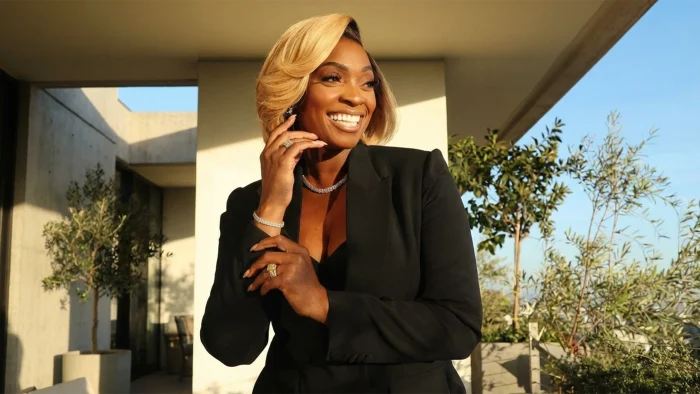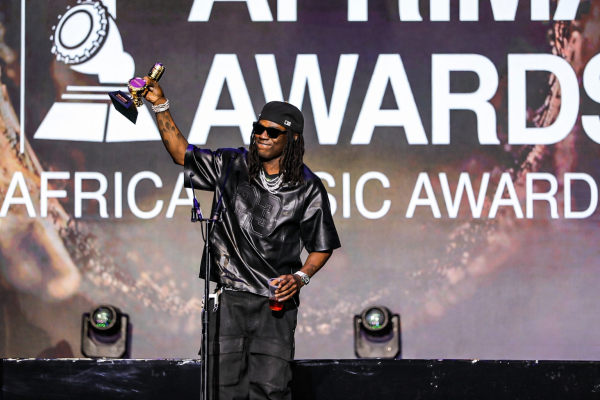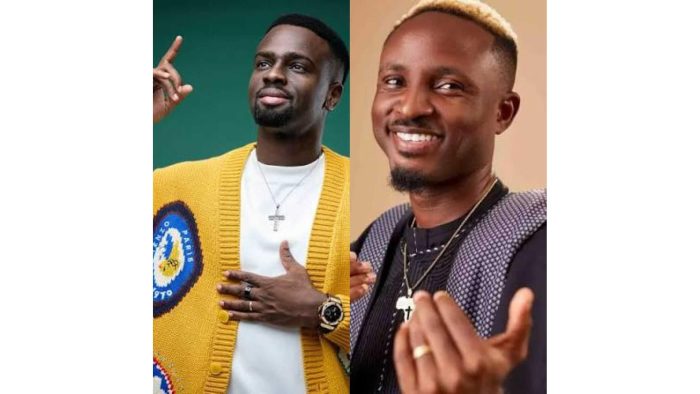It’S no gain saying, Emmanuel N’Djoké Dibango, popularly known as Manu Dibango, was Cameroon’s, and perhaps, Africa’s best-known jazz saxophonist. His music, a fusion of African rhythms (traditional West African styles) with funk, would remain evergreen.
The renowned Afro-jazz artiste bade the world farewell on Tuesday, March 24, when he bowed to coronavirus (CoVID-19) at age 86, in a Paris hospital. He was reportedly hospitalised with an illness linked to CoVID-19, his official Facebook page said.
His representatives broke the news of his death. “Dear family, dear friends, dear fans; a voice raises from far away… It is with deep sadness that we announce to you the loss of Manu Dibango, our Papy Groove, who passed away on March 24, 2020, at 86 years old, further to Covid 19. His funeral service will be held in strict privacy, and a tribute to his memory will be organized when possible.”
[ad]
Dibango’s death came weeks after the legendary Joseph Shabalala, founder of Grammy award-winning South African music group, Ladysmith Black Manbazo, joined his ancestors.
Meanwhile, top African music acts including Grammy award winner, Angelique Kidjo, Youssou Ndour has led tributes to the late legend.
Kidjo on her Twitter handle, @angeliquekidjo, shared a video, recorded two months ago, of her rehearsing the end of Soul Makossa with Dibango.
“Dear #ManuDibango, you’ve always been there for me from my beginnings in Paris to this rehearsal just two months ago! You’re the original giant of African music and a beautiful human being. This coda of #SoulMakossa is for you!” the Beninois performer wrote.
[ad]
Ndour called the Camerounian a ‘genius’ on the saxophone and described him as a “big brother, a pride for Cameroon and all of Africa.”
Both Ndour and Kidjo, along with other African music legends such as Salif Keita, Papa Wemba and King Sunny Ade, worked on Dibango’s 1994 album Wakafrika.
Born December 12, 1933, in the Douala, which at the time was under French colonial rule, Dibango grew up in a musical Protestant Christian household. His parents represented two historically rivalrous Camerounian ethnic groups: his mother was Duala (Douala), and his father was Yabassi.
While a child, he attended a Protestant church, where he enjoyed studying music. He was reportedly a fast learner. His musical aptitude became evident at an early age through his singing at the local church, where his mother was a choir leader.
[ad]
Dibango drew influences from the church, but more from music greats before him, and was well known for his eclectic style.
“I’m a child raised in the ‘Hallelujah’,” he was quoted saying. “I play different kinds of music before playing my own. I think that it’s very important to play other people’s music,” he told the BBC in 2017.
In 1941, after being educated at his village school, the Africa Boogie, Aloko Party, and Lagos Go Slow, all 2013 releases, was accepted into a colonial school, near his home, where he learned French. He admired the teacher, whom he described as “an extraordinary draftsman and painter.”
French president Charles de Gaulle selected his school, in 1944, to perform the welcoming ceremonies upon his arrival in Cameroon. At age 15 (1949), the music great was sent to high school in France, where he began learning instruments: first the piano, then saxophone – for which he became best known – and vibraphone.
[ad]
To the disappointment of his father, Michel Manfred N’Djoké Dibango, a civil servant, the songwriter failed his high school examinations and took up music performing in nightclubs in Belgium, AFP reports.
After completing high school in Saint-Calais and Chartres, he furthered his studies in Reims and in Paris. The first tune he performed, in front of fellow students, was When the Saints Go Marching In, he told the BBC.
He started taking classical piano lessons at age 17, and a few years later he began studying saxophone, having been captivated by the music of Duke Ellington, Sidney Bechet, Louis Armstrong, and other jazz artistes.
“The blacks that we saw (in France) were either boxers like, Sugar Ray Robinson – or jazzmen. So, we ended up going down to the cellars in Paris, where we could see the (Louis) Armstrongs and the Count Basies with whom we identified,” he remembered in a 2018 interview.
[ad]
Making quick progress on both instruments, he joined the Congolese rumba group, African Jazz, which paraded notable Camerounian guitarist and composer, Francis Bebey and soon became a recognised entity within the local jazz circuit.
In 1956, Dibango moved to Brussels, Belgium, where he not only learned to play the vibraphone but also expanded his stylistic vocabulary to include various West African forms—most notably makossa, a Camerounian genre in Douala.
It was at this time that he began to realise his ambition of forging a new musical sound by merging jazz with African popular traditions. He toured Europe in 1960 with the group under bandleader Joseph Kabasele, a Congolese musician, who shared his interest in musical fusion.
[ad]
After the tour, Dibango followed Kabasele to the Democratic Republic of Congo, and he remained with the band until 1963, when he moved back to Cameroun, where he established his own band and continued to broaden his knowledge of African regional styles.
He returned to Paris in 1965 and supported himself as a studio musician, backing many African-American and African artistes at a time when Europe was riding high on soul music. He continued to experiment with new ideas of jazz, which is an amalgamation of various popular music genres, especially those stemming from Africa and the African diaspora.
The legend included one such experiment on the B-side of his 1972 hit single, Soul Makossa, a song he was commissioned to write for the African Cup of Nations competition. That song, pioneering disco hit was a mixture of jazz, makossa, and soul music that ultimately marked the turning point in Dibango’s career. It sold more than 100,000 copies in the United States despite negligible radio airplay.
[ad]
The song as one of the earliest hits in the nascent world music scene has influenced popular music hits, including a catchy hook copied by some of the world’s biggest pops stars such as Kool and the Gang in their Jungle Boogie.
The 1982 parody song Boogie in your butt by comedian Eddie Murphy interpolates Soul Makossa’s bassline and horn charts, while Butt Naked Booty Bless by 1990s hip-hop group Poor Righteous Teachers heavily samples its musical bridge and drum patterns.
In 1990, the sax aficionado published his autobiography, Three Kilos of Coffee (originally in French), with Danielle Rouard. His unrelenting energy on the saxphone, called everyone to attention, as he was nominated in the Best R&B Instrumental Performance and Best Instrumental Composition categories for Soul Makossa at the 16th
Annual Grammy Awards in 1974.
[ad]
WITH a career that spanned over six decades, and collaboration with many other music greats, including Fania All-Stars, Fela Kuti, Herbie Hancock, Bill Laswell, Bernie Worrell, Ladysmith Black Mambazo, King Sunny Adé, Don Cherry, and Sly and Robbie, Dibango achieved a considerable following in the UK with a disco hit called Big Blow, originally released in 1976 and re-mixed as a 12 single in 1978 on Island Records.
Although popular in Europe, both Dibango and his Soul Makossa were virtually unknown in North America until the tune was discovered and broadcast in 1973 by a radio disc jockey in New York City.
The song took the United States by storm, thrusting the saxphone genius into the limelight. The song was even famously paraphrased by Michael Jackson in the recurring phrase “ma-ma say, ma-ma sa, ma ma-coo-sa” at the end of his 1982 release Wanna Be Startin’ Somethin, a track off his critically acclaimed album, Thriller.
Following the song’s frenzy, Dibango traveled widely, absorbing new sounds and undertaking collaborative projects with musicians who represented an array of Afro-Caribbean, African, and African-American popular music genres.
[ad]
He went tour internationally with the American salsa band, the Fania All-Stars in 1973. And the same year, he made the Top 40 with Soul Makossa. Years later, he recorded two albums —Gone Clear and Ambassador (both released in 1980)— in collaboration with a host of Jamaica’s most prominent reggae artistes.
Earlier, he had released the Africa-oriented albums Home Made (1978), featuring Nigerian and Ghanaian musicians, and Waka Juju (1982), which tapped elements of an assortment of African popular styles.
After the release of the funk-flavoured Surtension (1982), Dibango worked with an international lineup of jazz luminaries, such as American pianist, Herbie Hancock, in Electric Africa (1985) and South African trumpeter, Hugh Masekela, in Afrijazzy (1986).
In 1990, the sax aficionado published his autobiography, Three Kilos of Coffee (originally in French), with Danielle Rouard. His unrelenting energy on the saxphone, called everyone to attention, he was nominated in the ‘Best R&B Instrumental Performance’ and ‘Best Instrumental Composition’ categories for Soul Makossa at the 16th Annual Grammy Awards, which held in 1974.
[ad]
The exponent’s jazz blends of the 1990s and the 2000s continued to draw from a diverse pool of popular music. In his Polysonik (1991), jazz, rap, and various African traditions were intertwined, while Wakafrika (1994) brought together African vocal virtuosos including Youssou N’Dour (Senegal), King Sunny Ade (Nigeria), Salif Keita (Mali), Angélique Kidjo (Benin), Ray Lema (Congo), and the group Ladysmith Black Mambazo (South Africa), as well as other prominent musicians.
Dibango traced back his spiritual roots with a mixture of gospel music, spirituals, and rhythm and blues on the album Lamastabastani (1995).
In 1998, he recorded the album CubAfrica with Cuban artiste Eliades Ochoa.
His albums of the early 21st century tended to be retrospective. For instance, Africadelic (2003) was a compilation of his greatest hits, released to mark the 30th anniversary of the Soul Makossa explosion.
[ad]
In 2007, the Cameroun music great issued Manu Dibango joue Sidney Bechet, an all-jazz tribute in honour of the American saxophonist, Sidney Bechet, whose music was a formative force in his musical development.
He was the guest artiste at the closing ceremony of the revived Brecon Jazz Festival concert, which held in August 2009. The same year, he filed a lawsuit claiming that Michael Jackson stole a hook from his song, Soul Makossa, for the songs Wanna Be Startin’ Somethin, a track off the world’s best-selling album, Thriller, which was repeated by Rihanna in her song, Don’t Stop the Music.
According to Dibango, the line Mama-say, mama-sa, ma-ma-ko-ssa hook, which was used without his permission is from his 1972 hit single, Soul Makossa. Agence France-Presse (AFP) reported that Jackson admitted that he borrowed the line for ‘Wanna Be Startin’ Somethin’ and settled out of court.
According to reports, Rihanna had in 2007, asked Jackson for permission to sample the line, which he allegedly approved the request without contacting Dibango before hand.
[ad]
His attorneys brought the case before a court in Paris, demanding €500,000 in damages and asking for Sony BMG, EMI and Warner Music to be “barred from receiving ‘mama-say mama-sa’-related income until the matter are resolved”. The judge ruled that Dibango’s claim was inadmissible.
A year earlier (in 2008), a Paris-area judge had ordered Universal Music to include Dibango’s name in the liner notes of future French releases of Don’t Stop the Music, but at the time of the court appearance, the sax legend had withdrawn legal action, thereby waiving his right to seek further damages.
In addition to his stage and studio activities, Dibango composed music for film and television. His song, Reggae Makossa, was featured as the soundtrack to the 2006 video game Scarface: The World Is Yours. In July 2014, he made an 80th-anniversary concert at Olympia, France, which was broadcast by TV5Monde.
Harbouring a deep and ongoing concern for the well-being of humanity, the Dance with Manu Dibango crooner, usually used his music and influence to garner support for various humanitarian causes.
[ad]
In recognition of his contributions to the development of music as well as his cultivation of cross-cultural dialogue —particularly between Europe, Africa, and North America— through the arts, Dibango was named the UNESCO Peace Artiste of the Year in 2004. Also, he was appointed to serve as the first chairman of Cameroun Music Corporation, which was bombarded with high profile disputes about artistes’ royalties.
On September 8, 2015, Michaëlle Jean, Secretary General of the Organisation Internationale de la Francophonie, honoured the Cameroun legend with the title of Grand Témoin de la Francophonie aux Jeux Olympiques et Paralympiques de Rio 2016 (Special Representative of Francophonia to the Rio 2016 Olympic and Paralympic Games).
With his trademark smile and the saxophone, he made all spectators reach the sky a board his Soul Makossa, a noted Cameroooian popular urban musical style. He indeed was a fascination to everybody who listened to his music.








